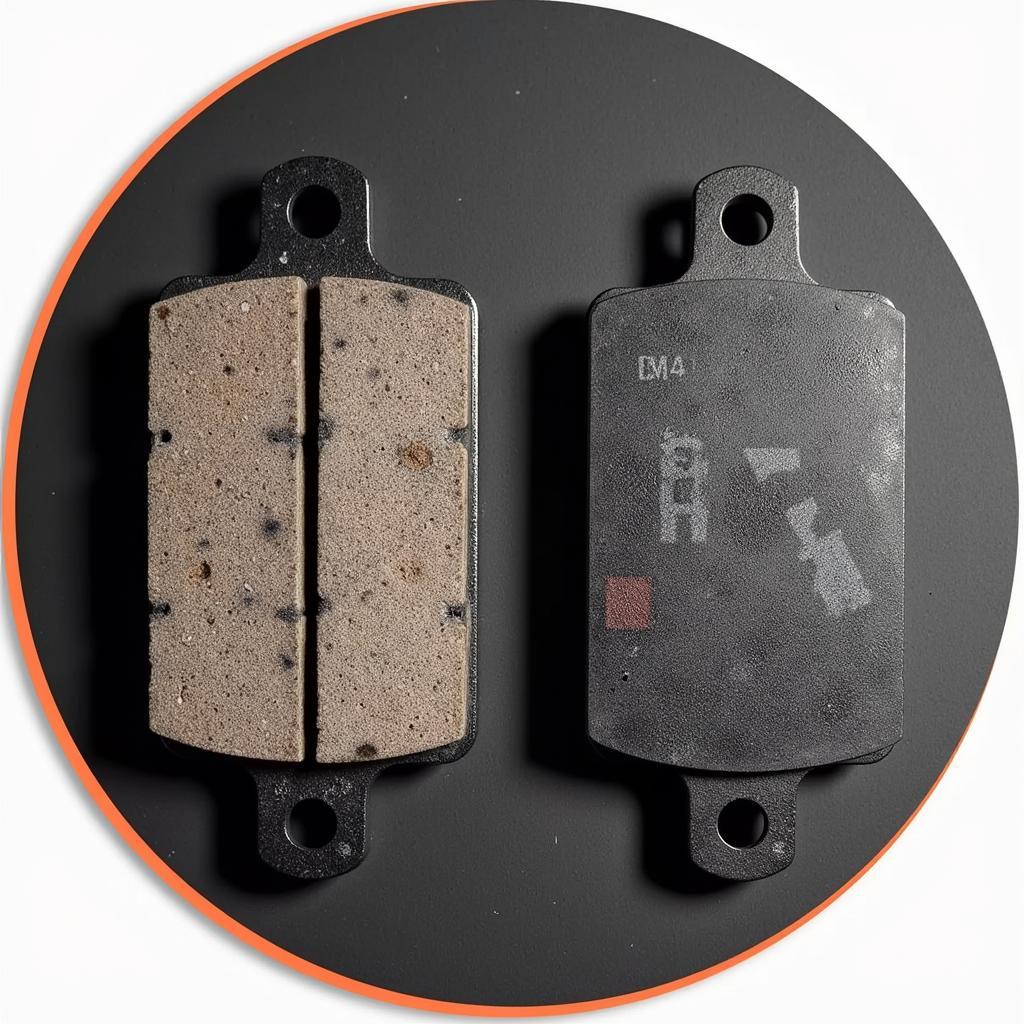A “BMW brake warning on nav system” message can be alarming, especially if you’re unsure what it means or how to address it. This comprehensive guide delves into the common causes of this warning, offering practical DIY solutions and expert advice to help you get back on the road safely.
Understanding Your BMW Brake Warning
BMWs are equipped with sophisticated onboard computer systems that monitor various components, including the braking system. When a problem is detected, a warning message, often accompanied by an audible chime, appears on the iDrive or navigation system screen.
This warning can indicate anything from worn brake pads to more serious issues with the braking system. It’s crucial not to ignore this warning as it compromises your safety and could lead to costly repairs.
Common Causes of a BMW Brake Warning
1. Worn Brake Pads
This is the most frequent cause of the warning. BMW brake pads have wear sensors that trigger a message on the navigation system when they wear down to a certain level.
 Worn BMW Brake Pads
Worn BMW Brake Pads
2. Brake Fluid Level
Low brake fluid can also activate the warning light. Brake fluid is essential for transmitting force from the brake pedal to the brake calipers, and a leak in the system can lead to a dangerous loss of braking power.
3. Brake Sensor Malfunction
Sometimes, the brake pad wear sensors themselves can malfunction, triggering a false warning. This could be due to a broken sensor wire or a faulty sensor.
4. Issues with the ABS System
The Anti-lock Braking System (ABS) is a critical safety feature that prevents wheel lockup during hard braking. A malfunction in the ABS system, often indicated by an additional ABS warning light, can also trigger the brake warning on the navigation system.
5. Electronic Glitches
Like any complex electronic system, the iDrive or navigation system can experience glitches, leading to false warnings. This is less common but can occur after a software update or electrical disturbance.
Resetting the BMW Brake Warning on Nav System
Important: Before attempting to reset the warning, it’s vital to inspect your brake system or consult a qualified mechanic to ensure there are no underlying issues.
If you’ve addressed the underlying issue and the warning persists, you can try resetting the system. The process varies slightly depending on the model year and system but generally involves these steps:
- Access the Service Menu: Using the iDrive controller, navigate to the vehicle’s main menu and look for the “Service” or “Vehicle Information” section.
- Find the Brake System Menu: Look for an option related to brakes, such as “Brake Pad Check” or “Brake Fluid.”
- Reset the Warning: Select the reset option. You might need to confirm the reset.
- Verify the Reset: After completing the steps, check if the warning light has disappeared.
Note: This reset procedure is primarily for informational purposes. If you are uncomfortable performing these steps or the warning persists, it is recommended to seek professional assistance.
When to Seek Professional Help
While some issues like worn brake pads can be addressed with basic DIY maintenance, others require specialized knowledge and tools. If you encounter any of the following, it’s best to consult a qualified BMW mechanic:
- Persistent Brake Warning: If the warning light doesn’t reset or reappears shortly after, it indicates a persistent issue that needs professional attention.
- Visible Brake Fluid Leak: A leak in the brake system is a serious safety concern and requires immediate professional repair.
- Unusual Noises: Grinding, squealing, or clicking noises during braking can indicate severe brake pad wear or other braking system problems.
- Soft or Spongy Brake Pedal: This can be a sign of air in the brake lines or a problem with the master cylinder, both requiring professional attention.
 BMW Mechanic Diagnosing Brake Issues
BMW Mechanic Diagnosing Brake Issues
Tips for Maintaining Your BMW Brakes
- Regular Inspections: Get your brakes inspected at least once a year or as recommended by your BMW service schedule.
- Timely Brake Pad Replacement: Don’t wait for the warning light to replace your brake pads. Adhering to the recommended replacement intervals ensures optimal braking performance.
- Quality Brake Parts: Always use high-quality brake pads, rotors, and fluids designed specifically for your BMW model.
- Brake Fluid Flush: BMW recommends flushing your brake fluid every two years or as per the service schedule to prevent corrosion and maintain optimal braking performance.
 New BMW Brake Pads and Rotors
New BMW Brake Pads and Rotors
Conclusion
A “BMW brake warning on nav system” should never be ignored. While it could be as simple as worn brake pads, it could also indicate more serious underlying issues. Regular maintenance, timely repairs, and knowing when to seek professional help are crucial for ensuring your BMW’s braking system remains in optimal condition, keeping you safe on the road.
Don’t hesitate to contact a certified BMW technician for any concerns or if you need assistance with your BMW’s braking system.
Frequently Asked Questions
1. Can I drive my BMW with the brake warning light on?
It’s not advisable to drive with a brake warning light on. It’s crucial to address the issue immediately as it could compromise your safety.
2. How much does it cost to fix a BMW brake warning?
The cost varies widely depending on the underlying cause. A simple brake pad replacement is significantly cheaper than repairing a faulty ABS module.
3. Can I reset the brake warning light myself?
While you can attempt to reset the warning, it’s recommended to have a professional diagnose and fix the underlying problem.
4. How often should I change my BMW brake fluid?
BMW recommends a brake fluid flush every two years or as per the service schedule.
5. Why is my BMW brake warning light still on after changing the brake pads?
The warning light might need to be manually reset after replacing the brake pads. However, a persistent light could indicate a different issue that needs further diagnosis.


